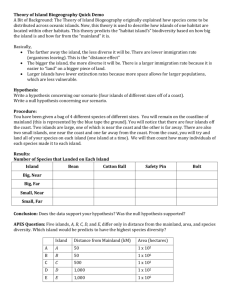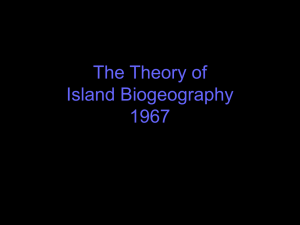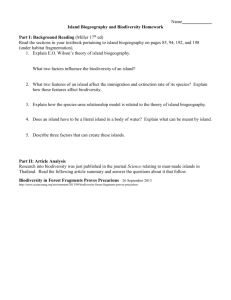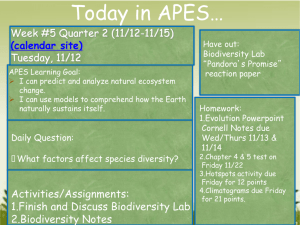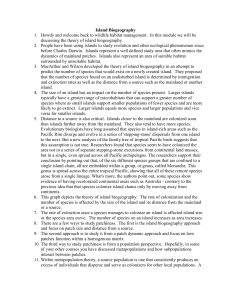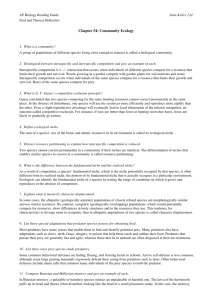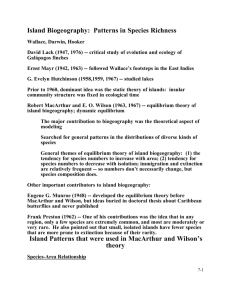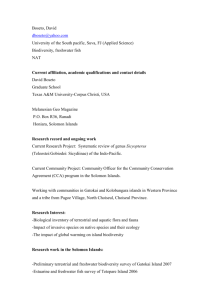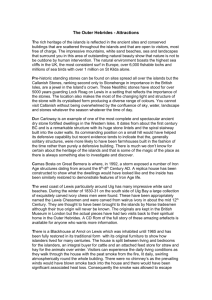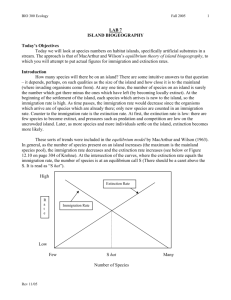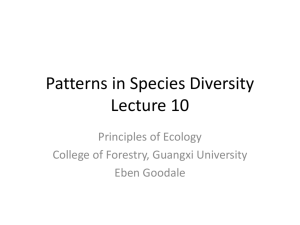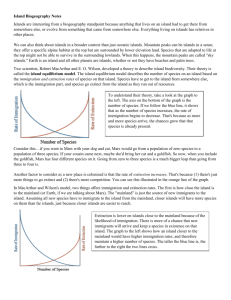Biodiversity
advertisement
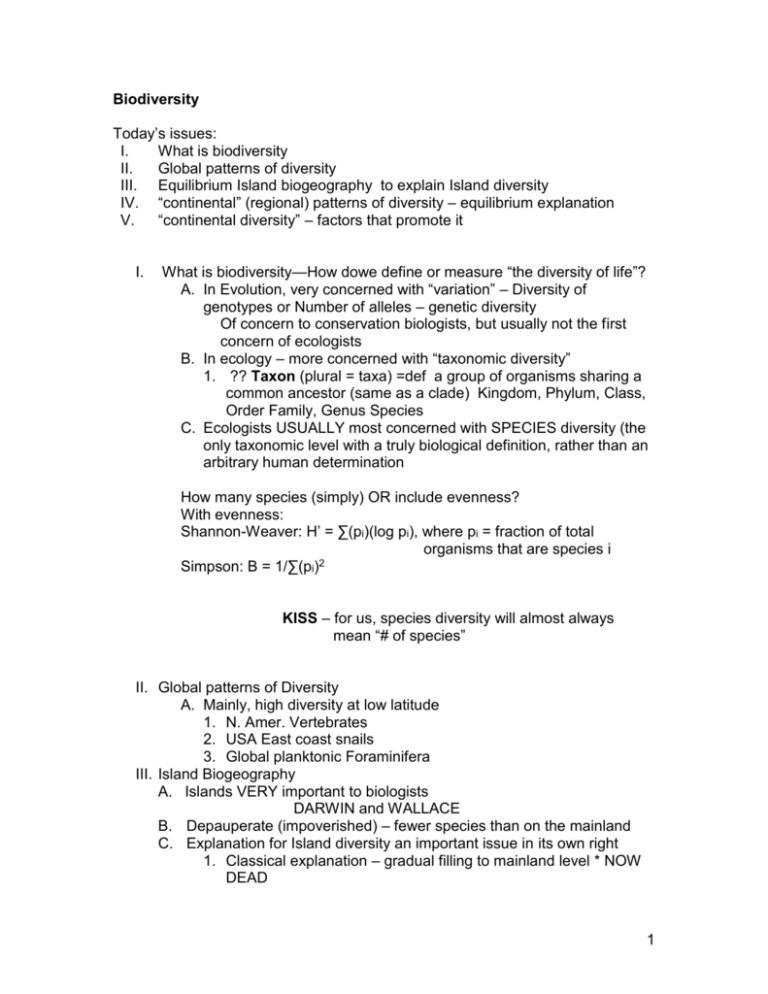
Biodiversity Today’s issues: I. What is biodiversity II. Global patterns of diversity III. Equilibrium Island biogeography to explain Island diversity IV. “continental” (regional) patterns of diversity – equilibrium explanation V. “continental diversity” – factors that promote it I. What is biodiversity—How dowe define or measure “the diversity of life”? A. In Evolution, very concerned with “variation” – Diversity of genotypes or Number of alleles – genetic diversity Of concern to conservation biologists, but usually not the first concern of ecologists B. In ecology – more concerned with “taxonomic diversity” 1. ?? Taxon (plural = taxa) =def a group of organisms sharing a common ancestor (same as a clade) Kingdom, Phylum, Class, Order Family, Genus Species C. Ecologists USUALLY most concerned with SPECIES diversity (the only taxonomic level with a truly biological definition, rather than an arbitrary human determination How many species (simply) OR include evenness? With evenness: Shannon-Weaver: H’ = ∑(pi)(log pi), where pi = fraction of total organisms that are species i Simpson: B = 1/∑(pi)2 KISS – for us, species diversity will almost always mean “# of species” II. Global patterns of Diversity A. Mainly, high diversity at low latitude 1. N. Amer. Vertebrates 2. USA East coast snails 3. Global planktonic Foraminifera III. Island Biogeography A. Islands VERY important to biologists DARWIN and WALLACE B. Depauperate (impoverished) – fewer species than on the mainland C. Explanation for Island diversity an important issue in its own right 1. Classical explanation – gradual filling to mainland level * NOW DEAD 1 2. ACCEPTED Equilibrium explanation – graphical For most taxa, on most islands, the number of species present is set at that number where the rate of species immigration (which is a declining function of species present) equals the rate of species extinction immigration (which is a rising function of species present). HORRIBLE-A PICTURE (GRAPH) WORKS MUCH BETTER: ??EQUILIBRIUM?? ??STABILITY?? ??DYNAMIC (not STATIC)?? a. Predictions (generate by altering the basic graph): larger islands will have ??more?? species closer islands will have ??more?? species TURNOVER Change of species over time for “oceanic” & “continental” islands b. Simberloff, terrestrial arthropods on mangrove islands IV. “continental” (regional) patterns of diversity – equilibrium explanation A. Build a new graph, working from the Island graph B. Axes??? C. What would a point represent?? D. What trajectories would you expect for X vs Y relationships?? HAVE STUDENTS DERIVE THE GRAPH FOR CONTINENTAL DIVERSITY 2 THREE BASIC THINGS TO ALTER IN A REGION TO REDUCE SPECIES DIVERSITY ????? 1. 2. 3. Massive disturbance (& slow recovery) – basically an invocation of “classical theory” from island biogeog Elevate the “Speciation + Immigration rate” curve Depress the “Extinction Rate” curve ?? What particular features of a region could give it higher diversity; how related to factors 1 thorough3 above?? – “Table Group” exercise A. No Massive (catastrophic) disturbance (category 1) B. Competition (category 3) 1. Wider resource span 2. Greater resource abundance 3. Greater resource reliability - Greater “Accommodation” C. Predation (& disturbance) (cat. 3) 1. Partitionable resource dimension added to niche 2. Prevent monopolization of resources D. Sub-division of region into sub-regions that exchange organisms occasionally (cat. 2) - May promote both allopatric speciation, or add more Immigration to the “S + I rate” 3 4







